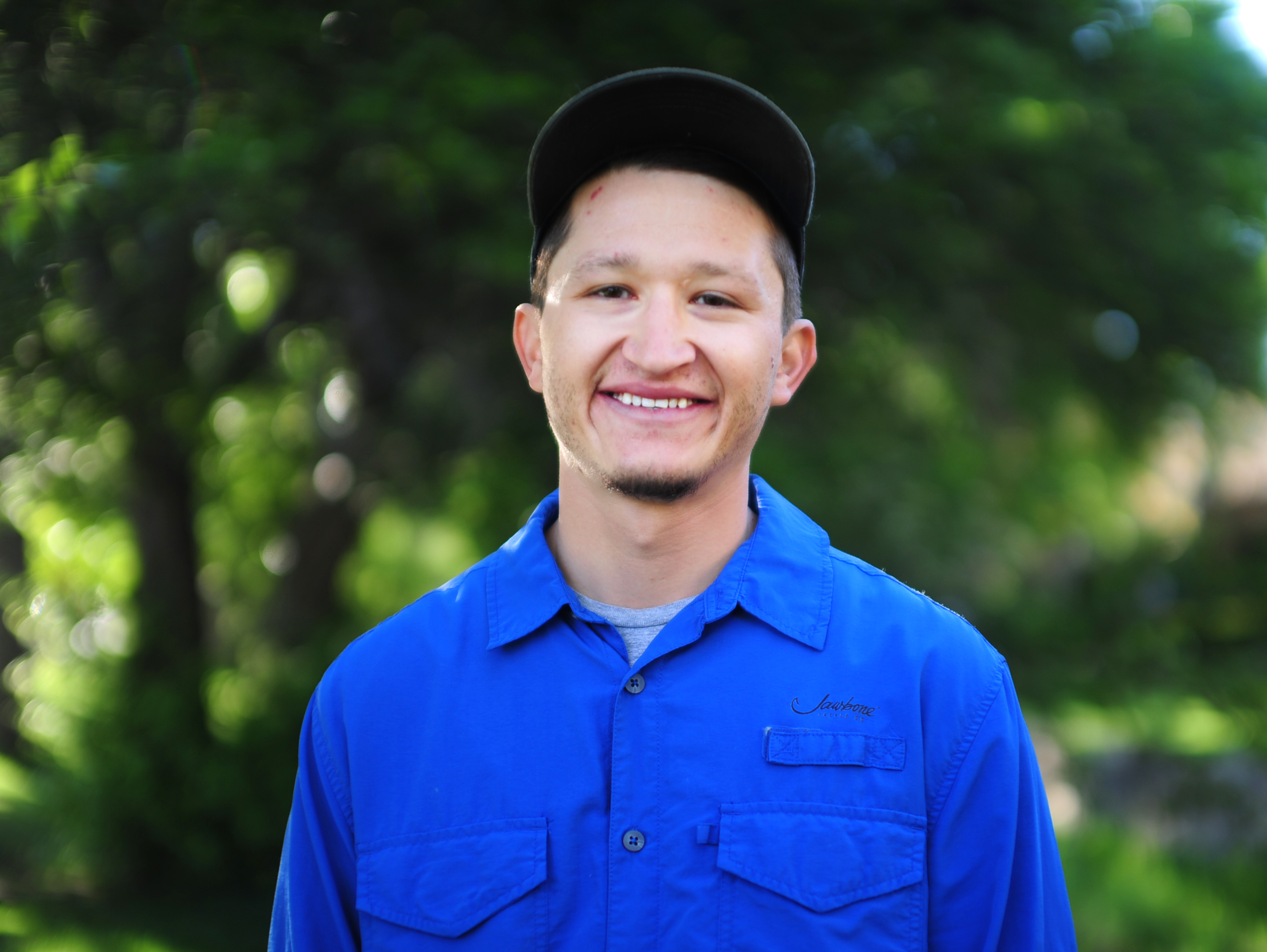
Jeremy Romero
Hunter
Jeremy Romero says he had no idea that a childhood fascination would become both a calling and a vocation. Romero grew up going to his family’s cabin on a 200 acre parcel of land in the middle of the Santa Fe National Forest in New Mexico. The land was purchased by his great-grandfather in the early 1900s and it was there he learned about family traditions – hunting, fishing, hiking and wood gathering. He also became a keen observer and admirer of wildlife.
“As a young boy, I would walk out of the cabin on early fall mornings and see 50 elk walking past. I would stand transfixed, watching them move. It was my first education about wildlife connectivity, even though, of course, I wouldn’t learn that term for many, many years.”
Romero’s property is in the heart of a wildlife corridor, used by elk to travel from higher summer range to lower winter range. Although the landscape is constantly changing – with wildfires, new aspen growth and the ebb and flow of a river, Romero says the elk still come every year and it’s likely they’ve been doing so for hundreds of years.
“It turns out that our ranch is an important link in elk movement from the Valles Caldera National Preserve in the summer to spending the winter in the Santa Fe National Forest.”
Growing up as a hunter, Romero also learned about conservation from an early age. He says hunters and anglers are the main reason that the North American model of wildlife management has been so successful. Funding from licenses and fees helps finance conservation projects while sportsmen and sportswomen are very aware that habitats must be protected for wildlife to thrive.
“It may seem counterintuitive that hunters have such a strong desire to protect wildlife, but it’s not. As a hunter, I fill my freezer with meat so my family can eat. But if wildlife and wildlife habitat isn’t healthy, I can’t do that. Hunters know they can’t just take without replenishing the landscape.”
This strong interest in the natural world eventually led Romero to study environmental science at college. After graduation, he took a job in a lab at the New Mexico State University, growing algae for sustainable energy production. It was interesting work, but he soon grew restless. He knew he’d rather be working with communities on wildlife and public lands issues. Then one day, Romero received a call about a contract job with the New Mexico Wildlife Federation to work on wildlife corridors.
“It was divine intervention. After I accepted the position, I put myself in a ‘sponge’ mentality. I wanted to learn as much as I could as quickly as possible,” says Romero. “I have some terrific mentors who continuously educate me how to advocate for better conservation practices and stewardship on public lands. I took the strong work ethic that was taught to me in protecting and managing our family land and magnified it to protect our public lands.”
Romero said the new job also allowed him to help educate other landowners about how to become better stewards of the land.
“One of the most important things landowners can do is install wildlife-friendly fences. Elk and mule deer jump over fences while pronghorn routinely go under. Unfortunately, wildlife often get caught on the barbed wire. Many management practices can be implemented to protect wildlife and livestock.”
Romero now works for the National Wildlife Federation as the Regional Connectivity Coordinator for western lands. He has spent much of the last two years working with federal forest planners, state and tribal wildlife officers, elected officials and landowners to craft management plans and strategies that will protect migration pathways in the Upper Rio Grande region while also educating and lifting up communities.
“I’ve learned that I have a voice for protecting the lands I love. When I started this job, I didn’t really know just how powerful that voice could be. In order to protect these lands and our cultural values, we all have to speak up,” says Romero. “It’s amazing what can be accomplished if people come together and work together across jurisdictional boundaries and to protect our lands, water and wildlife for generations to come.”
